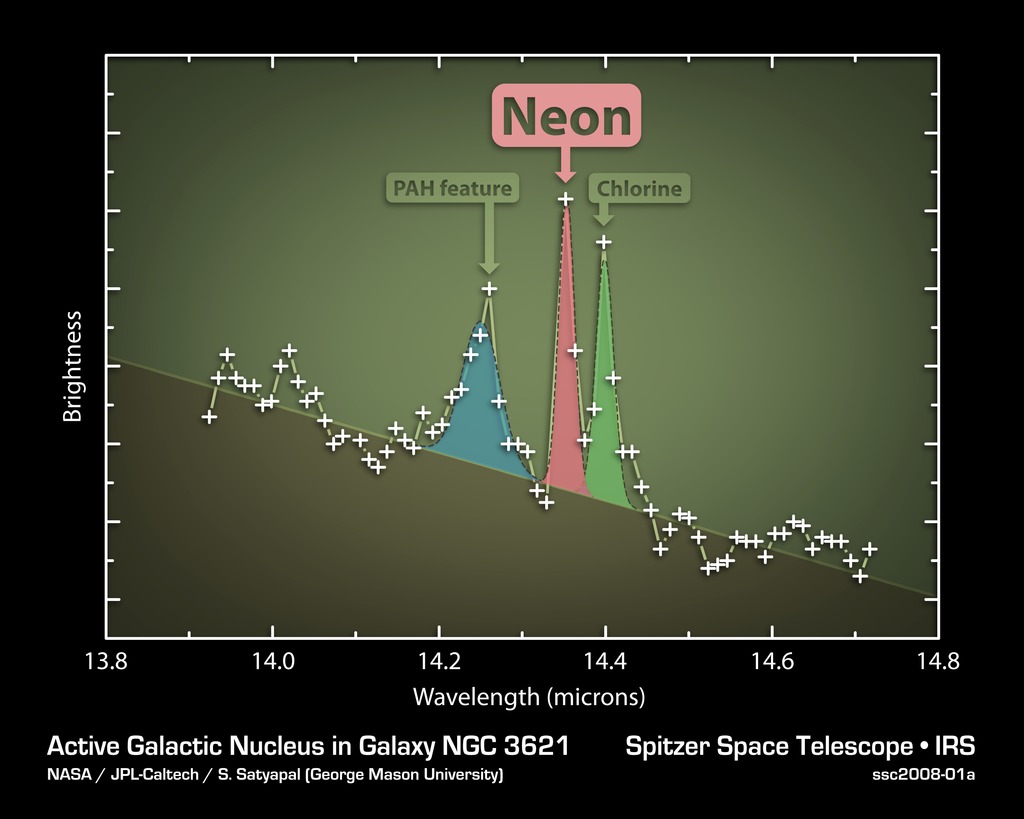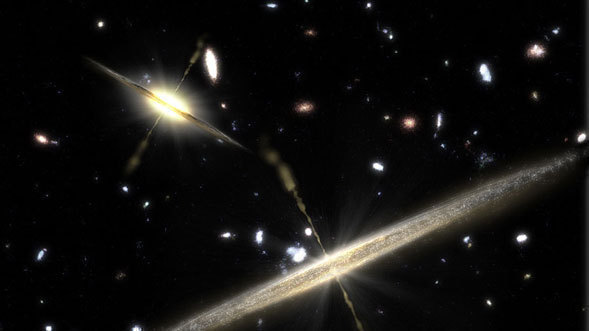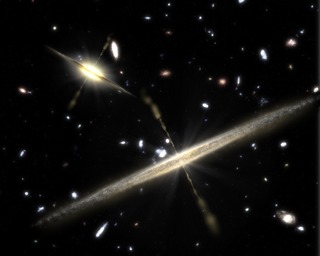
Credit: NASA/JPL-Caltech/S. Satyapal (George Mason University)
Chart • January 10th, 2008 • ssc2008-01a
ssc2008-01a
This plot of data from NASA's Spitzer Space Telescope indicates that a flat, spiral galaxy called NGC 3621 has a feeding, supermassive black hole lurking within it -- a surprise considering that astronomers thought this particular class of super-thin galaxies lacked big black holes.
The data were captured by Spitzer's infrared spectrograph, an instrument that cracks infrared light open to reveal the signatures of elements. In this case, the data, or spectrum, for NGC 3621, shows the signature of highly ionized neon -- a sure sign of an active, supermassive black hole. Only a black hole that is actively consuming gas and stars has enough energy to ionize neon to this state. The other features in this plot are polycyclic aromatic hydrocarbons and chlorine, produced in the gas surrounding stars.
The results challenge current theories, which hold that supermassive black holes require the bulbous central bulges that poke out from many spiral galaxies to form and grow. NGC 3621 is the second disk galaxy without any bulge found to harbor a supermassive black hole; the first, found in 2003, is NGC 4395. Astronomers have also used Spitzer to find six other mega black holes in thin spirals with only minimal bulges. Together, the findings indicate that, for a galaxy, being plump in the middle is not a necessary condition for growing a rotund black hole.
About the Object
- Name
- NGC 3621
- Type
- Galaxy > Type > Spiral
- Galaxy > Activity > AGN
- Galaxy > Component > Central Black Hole
- Distance
- 20,200,000 Light Years
- Redshift
- 0.0024
Color Mapping
| Band | Wavelength | Telescope |
| Infrared | Spitzer IRS |






